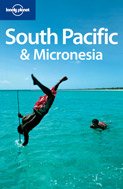TUVALU
Tuvalu, formerly known as the Ellice Islands and the Lagoon Islands, is a Polynesian island nation comprising of four reef islands - Nanumaga, Niulakita, Vaitupu and Niutao -and five true atolls - Funafuti, Nanumea, Nui, Nukufetau, and Nukulaelae - with a total land area of ten square miles.
It is located in the South Pacific Ocean midway between Hawaii and Australia.
The reef islands are solid pinnacles rising up from the sea bed and coconut palm trees cover most of the land. The low lying atoll islands rise up almost vertically from the sea bed, but are less than four meters above sea level at their highest point. The coral islets themselves form a reef which enclose a central lagoon.
The capital with the government offices are on the island of Funafuti. The main roads of Funafuti are the only paved ones in the whole of Tuvalu and there are few cars, with bicycles and motorbikes being the most popular form of transport.
Life on the islands is simple and often harsh, but the islanders have tapped into a very modern way of making money. They have sold the island's internet suffix (.tv) to a Californian company and make several million dollars a year in continuing revenue.
Weather
The climate is tropical with little variance in the hot humid weather all year round. Cooling trade winds help moderate these temperatures however, making the overall weather warm and pleasant.
The rainfall is fairly high especially during the summer months (November to April) and is typified by heavy downbursts which clear as quickly as they arrive. There are no rivers and lakes so the islanders rely on rainwater for it's water supply.
The summer is also hurricane season. There has been a rise in the number of hurricanes recently, probably due to climate change with some hurricanes occurring outwith the accepted hurricane season. These hurricanes can form extremely quickly and often do a great deal of damage.
Climate change and rising sea levels are a huge threat to island nations like Tuvalu. Seawater has seeped into the groundwater, killing coconut trees and flooding agricultural land, and storm damage has eroded the coastlines. By the end of the century, Tuvalu may become uninhabitable.
How to get there
This remote island group stands on the western edge of Polynesia - a remote outpost in the vast Pacific Ocean. Consequently travel to and from Tuvalu is neither cheap or easy.
There is an international airport on the island of Funafuti built by the Americans during World War Two. Air Fiji operates flights from here to Suva in Fiji twice a week.
There are no flights
to the other islands and these must be reached by boat. These inter-island ships do a two week round trip of the outer islands. The north bound trip takes eight days there and back and the south bound six days. Each island stop is for only one hour and anyone missing the boat will be stuck there until the ship returns.
The ships are able to enter the lagoons on the islands of Nukufetau and Funafuti, but have to anchor offshore at the others with goods and passengers being ferried by smaller vessels.
These ships also make occasional visits to Fiji, Kiribati and Tokelau.
Where to stay
Recently refurbished, the government owned 16 bedroom Vaiaku Lagi Hotel is situated in the centre of Funafuti town about 50 metres from the airport and set on the lagoon side of the island. Guests enjoy incredible views of the lagoon and the sunset is spectacular.
Guest houses and lodges are also available in Funafuti, most offering all meals and good modern accommodation.
What to see
and do
The islands of Tuvalu offer a peaceful getaway to an unspoiled corner of the Pacific with a non-commercialised environment that is ideal for rest and relaxation. With less than a thousand hardy tourists discovering it's charms every year you will get the impression that you are alone on your own private desert island.
The islands are flat and small, making their exploration easy on bike or by car (both can be hired locally). The atoll scrub provides a valuable nesting habitat for birds and the lagoons are spectacularly beautiful.
On the islands of Nanumea and Nukufetau, are the remains of World War Two American Airforce bases. Aeroplanes and the remainder of the runway are still there hidden in the scrub.
The islanders maintain their own distinctive Polynesian culture apparent in their art, crafts, architecture, music, dance and legends.
The Funafuti Marine Conservation Area is a recently declared national park containing six forested islets teeming with nesting birds, turtles and tropical fish.
A good day trip is to Funafula islet with its sandy beach and traditional village lifestyle.
|
New Zealand

New Zealand
Polynesia

American Samoa
Cook Islands
Easter Island
French Polynesia
Hawaii
Niue
Samoa
Tokelau
Tonga
Tuvalu
Wallis and Futuna
Micronesia

The Federated States of Micronesia
Marshall Islands
Palau
Northern Mariana Islands
Nauru
Kiribati
Guam
Wake Island
Melanesia

Bismarck Archipelago
Fiji
New Caledonia
New Guinea
Maluku Islands
Solomon Islands
Torres Strait Islands
Vanuatu
Further reading

South Pacific (Lonely Planet Travel Guides)
Tione Chinula, Geert Cole, Sally Dilon
Price: £11.21 (34% off list price)
This guide includes coverage of all the Pacific islands. It gives descriptions of canoe voyages taken by Pacific islanders in ancient times, and includes a special illustrated section on Pacific arts and artefacts.
Buy the book South Pacific securely online with 34% off via amazon.co.uk by clicking here
|